Rowena Wiseman's Blog, page 12
March 3, 2015
Ericka Clay from TipsyLit about her new novel Unkept

Ericka Clay is one of those writers I constantly see on the web and think 'I love what she's doing'. Her blog posts, videos and podcasts are witty, bubbly and helpful. I was pleased when I read some of her work on Wattpad and discovered her story writing sparkles too. Her talent deserves recognition, so I'm happy her debut novel Unkept has just come out with Bannerwing Books ...
Please tell us a little about Unkept and how you came to write the story?
Unkept is a women’s fiction novel that reveals the stories of Vienna and Heather, two women who were once childhood enemies and are forced into a makeshift friendship based on their relationships with the same man. They’re both dealing with the death of their mothers, their impending pregnancies, and giving their hearts to someone who isn’t honored by the responsibility. Frankly though, Vienna and Heather represent the two halves of my mind and the book sews them together. And it’s also a personal ode to my daughter, that she trusts herself no matter what and knows that she will always be loved and that no damage can be done on her part to change that.
What are you most excited about having your book out there in the world?
My books ARE me, and it’s an absolutely thrilling thought that people will be able to read and understand my heart, what I really think and believe. I think there’s no greater travesty than being misunderstood and the fact that I have an opportunity to make myself heard loud and clear is really a blessing. I also love the thought of someone reading a line and their whole world shifting, basking in light. Deep down, all I want is for people not to feel so alone. Loneliness can breed evil, and really what I want in this world is pure and absolute good.
What I love about what you do is you're always evolving as a writer and the way you promote your work and offer help and advice to other writers. I've noticed that you've recently started creating podcasts, you do YouTube videos, you're on Instagram, Google+, Goodreads, you name it, you're doing it! What do you find is the best way to truly engage with your audience?
My favorite so far is my podcast. It feels like me, it’s fun and at the same time, I get to offer my audience relevant information that will help them spruce up their writing careers. I always write up a blog post to accompany the podcast where I put links to all the marketing/writing info I talk about for my listeners. I know what it’s like to not know what the heck you’re doing with this marketing thing - I feel that way all the time! So it’s nice to at least gather my thoughts and experiences to help others have a firmer grasp on their promotional efforts.
Please tell us a little about Tipsy Lit and how people can get involved?
Tipsy Lit is my literary blog where I post my podcast, publishing tips, personal blog posts and my writing. I also encourage writers to submit their poetry pieces for my quarterly poetry magazine, The Tipsy 10, that I publish via my Wattpad account. I’m accepting submissions until the end of March for the Spring issue and would love to read more incredible work.
What's your best advice for emerging writers?
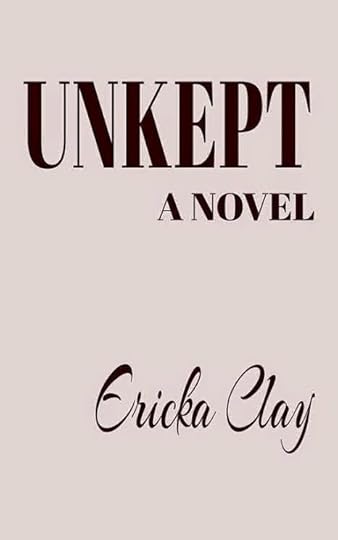 You can either be your worst enemy or your best friend. Choose wisely. I sometimes think as writers, we’re encouraged to be these deep, dark, brooding things that fester in our own misery. I think that’s dangerous. I think you have to channel that pain, but I also think art can be an extension of yourself. Put the deep, the dark, the brooding in your work. But at the same time, attempt to be a happy and mindful human being. The world could use more of those.
You can either be your worst enemy or your best friend. Choose wisely. I sometimes think as writers, we’re encouraged to be these deep, dark, brooding things that fester in our own misery. I think that’s dangerous. I think you have to channel that pain, but I also think art can be an extension of yourself. Put the deep, the dark, the brooding in your work. But at the same time, attempt to be a happy and mindful human being. The world could use more of those.Amazon: amzn.com/0692378022
Twitter: http://twitter.com/ErickaMClay
Instagram: http://instagram.com/ericka.clay
Blog: http://erickaclay.com
Published on March 03, 2015 11:59
February 17, 2015
Art of online stories

An interview with Andrea Thomas of Mint Magazine about why I'm excited about ebooks for children and the changing digital publishing landscape ... https://drive.google.com/file/d/0B0ajYgEpH8O_SWRLdEplTXRfYjg/view
Published on February 17, 2015 03:19
February 15, 2015
Aunty Arty dives right in
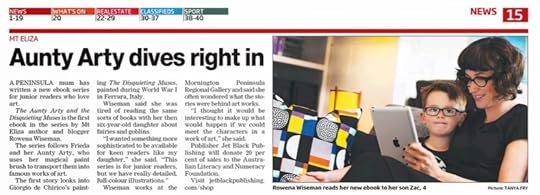
More about Aunty Arty ... this time in the Mornington Peninsula Leader ... https://drive.google.com/file/d/0B0ajYgEpH8O_OHFKelhrekRSSEU/view
Published on February 15, 2015 14:55
February 14, 2015
Subscribe by email!
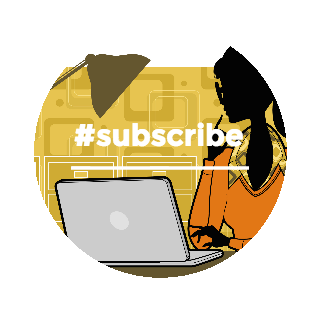
You can subscribe to outofprintwriting by email! Receive regular posts straight to your inbox about writing and publishing in the digital revolution ...
Enter your email address:
Delivered by FeedBurner
Published on February 14, 2015 19:37
February 12, 2015
About Booktrope with David J. Thirteen
Booktrope is a team publishing platform. Their community of readers select the manuscripts and the author, production and marketing team work together on Teamtrope to produce and market the book. I came across Booktrope a year or so ago and was interested in their revolutionary publishing model. David J. Thirteen's debut novel Mr. 8 has just been published by Booktrope after ranking #1 on Wattpad as a featured story. I asked David about his experience with Booktrope ...
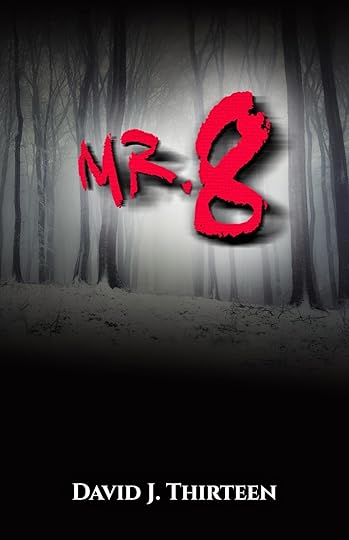
This book came almost completely from a dream. It was a particularly strange, complex and horrific dream that stuck with me. At the time, I was immersed in two other writing projects but the story wouldn’t leave me. I decided to make it a small side project and put it up as a serialized novel on Wattpad. I figured one short chapter a week could be done without impacting my other work. But it soon grew and became my main project.
Booktrope is a revolutionary publishing model. Tell us a little about the process from the author's perspective, from submitting your manuscript through to the production of it?I was extremely lucky with Booktrope. As I was nearing the end of Mr. 8, I was approached by a senior member of their team who was surveying Wattpad for publishable works. Having his recommendation made the submission process extremely smooth. I was attracted to them because of their quick to market approach. I knew that if I went with them, my book would be edited and in print in a matter of months, unlike a more traditional route that could take years.
Booktrope is a young company and has a very lean operation, with some great people working for them. They are very hands off, or as another author who published with them said to me, “Don’t expect any handholding.” They want writers with initiative and the drive to get their book published. Once I was signed on, they gave me access to their project website. This was where nearly all the interaction takes place. I had a project page that tracked each step of the process. There were also discussion forums, lots of literature on publishing and a directory of the other Booktrope members.
The first thing I needed to do was build my team. Instead of them having editors and designers on staff, Booktrope works with a team model, where all these professionals are freelance and will work on a project not for salary but for a percentage of future sales. I put the project team together researching members I felt would be a good match. This would lead to an online discussion that could take an afternoon or several weeks before we’d decide to work together.
The great thing about Booktrope letting me be so independent was how much control I had. And that was also the hardest part. There were days (especially at the beginning) where I wondered if they were out of their mind for putting so much into the hands of someone with so little experience. But little by little it came together as the book stepped through the process, so it looks like they knew what they were doing after all.
How did you find collaborating with your team - editor, proofreader, designer and marketer?Working with the team was a great experience. My only regret was we never got to meet face to face. I was working with people from around the country and around the world—my marketer is from Belgium. So an actual meeting was out of the question.
Working with my editor, Gerald Braude, was the most educational. I learned so much by seeing the elements he picked out for rewriting. I think if there is any one thing from the whole experience that I’d want to pass along to other writers, it is that getting an editor to go over your work is invaluable. A good one has the power to point out the mistakes you never knew you were making.
Working with the designer, Donald Cronkhite, was the most fun. He’s a graphic designer and an artist. Once I checked out his portfolio, I knew I wanted to work with him. I loved the way he took images from nature and turned them into bold, dramatic pieces. The cover is the only real visual element to a book, so it was very gratifying to see how the things that came up in brainstorming came together as a finished composition.
What are you working on next?
I’m currently working on The Things We Bury. It’s a short series centered around a government research lab for captured supernatural species. It’s a lot more science-fiction than Mr. 8, but it mashes in elements of horror, mystery, and a few other genres. I’m currently posting the beta version on Wattpad and book one should be completed in the spring.
Visit: http://www.davidjthirteen.com/Buy.php
Booktrope: http://booktrope.com/

This book came almost completely from a dream. It was a particularly strange, complex and horrific dream that stuck with me. At the time, I was immersed in two other writing projects but the story wouldn’t leave me. I decided to make it a small side project and put it up as a serialized novel on Wattpad. I figured one short chapter a week could be done without impacting my other work. But it soon grew and became my main project.
Booktrope is a revolutionary publishing model. Tell us a little about the process from the author's perspective, from submitting your manuscript through to the production of it?I was extremely lucky with Booktrope. As I was nearing the end of Mr. 8, I was approached by a senior member of their team who was surveying Wattpad for publishable works. Having his recommendation made the submission process extremely smooth. I was attracted to them because of their quick to market approach. I knew that if I went with them, my book would be edited and in print in a matter of months, unlike a more traditional route that could take years.
Booktrope is a young company and has a very lean operation, with some great people working for them. They are very hands off, or as another author who published with them said to me, “Don’t expect any handholding.” They want writers with initiative and the drive to get their book published. Once I was signed on, they gave me access to their project website. This was where nearly all the interaction takes place. I had a project page that tracked each step of the process. There were also discussion forums, lots of literature on publishing and a directory of the other Booktrope members.
The first thing I needed to do was build my team. Instead of them having editors and designers on staff, Booktrope works with a team model, where all these professionals are freelance and will work on a project not for salary but for a percentage of future sales. I put the project team together researching members I felt would be a good match. This would lead to an online discussion that could take an afternoon or several weeks before we’d decide to work together.
The great thing about Booktrope letting me be so independent was how much control I had. And that was also the hardest part. There were days (especially at the beginning) where I wondered if they were out of their mind for putting so much into the hands of someone with so little experience. But little by little it came together as the book stepped through the process, so it looks like they knew what they were doing after all.
How did you find collaborating with your team - editor, proofreader, designer and marketer?Working with the team was a great experience. My only regret was we never got to meet face to face. I was working with people from around the country and around the world—my marketer is from Belgium. So an actual meeting was out of the question.
Working with my editor, Gerald Braude, was the most educational. I learned so much by seeing the elements he picked out for rewriting. I think if there is any one thing from the whole experience that I’d want to pass along to other writers, it is that getting an editor to go over your work is invaluable. A good one has the power to point out the mistakes you never knew you were making.
Working with the designer, Donald Cronkhite, was the most fun. He’s a graphic designer and an artist. Once I checked out his portfolio, I knew I wanted to work with him. I loved the way he took images from nature and turned them into bold, dramatic pieces. The cover is the only real visual element to a book, so it was very gratifying to see how the things that came up in brainstorming came together as a finished composition.
What are you working on next?
I’m currently working on The Things We Bury. It’s a short series centered around a government research lab for captured supernatural species. It’s a lot more science-fiction than Mr. 8, but it mashes in elements of horror, mystery, and a few other genres. I’m currently posting the beta version on Wattpad and book one should be completed in the spring.
Visit: http://www.davidjthirteen.com/Buy.php
Booktrope: http://booktrope.com/
Published on February 12, 2015 14:17
February 9, 2015
Tips for submitting your manuscript
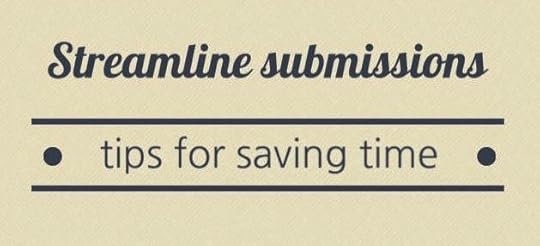
In my novelette Bequest Leonard has spent years having his body tattooed by a well known Australian artist. The story traces his quest about what to do with his literal body of work after his passing. I’ve been feeling a little like Leonard lately. I’ve bled lines out of me, painfully sometimes, easily other times, and it’s amounted to three novels, two novellas and a novelette ... and now I have to figure out what to do with this body of work ...
This year, I'm stopping myself from starting something new, until I find a home for some of my old stories. My greatest problem is that I'd rather write a 50,000 word novel than a 1-page synopsis. But once that hurdle is jumped, here's what I'm now doing to streamline the submission process ...
I've created a submissions spreadsheet, with a tab for 'Publishers' and a tab for 'Agents' so that I can properly track dates, stories and responses. This stops me from pitching different stories to the same publisher/agent at the same time and will make it easier to contact others if a story does get accepted elsewhere.On this spreadsheet I'm also recording special submission dates for unpublished manuscript awards or open submission dates for publishers, for example Macmillan Australia only accepts manuscripts on the first Monday of the month (easy to miss without a good system!). I'm also setting reminders in my phone, if needed.I'm creating a better file management system to save time submitting. Publisher and agent submission guidelines often vary, but if I have the following available for each story it should cover most bases: a 1-page synopsisa shorter 300 word synopsisa short blurb for the cover letteran author biofirst chapter of the msfirst 3 chapters of the msa 50-page version of the msa 100-page version of the msSome agent and publishers are now asking for PDF versions of documents so they can read on ereaders. I'm also saving PDF versions as requested, so that I'll have these easily on hand if needed again.I'm creating a hierarchy for submissions, working my way from the top, submitting in small batches and waiting a month or two for responses, before sending out the next batch. Last year I received three contracts for stories in the space of two weeks, exciting yes, but overwhelmingly busy. It meant that I was working on editing stories simultaneously with three different publishers, which I'd rather avoid in the future, to give each story the attention it really deserves!
Published on February 09, 2015 11:55
February 3, 2015
Signed limited edition prints of Aunty Arty
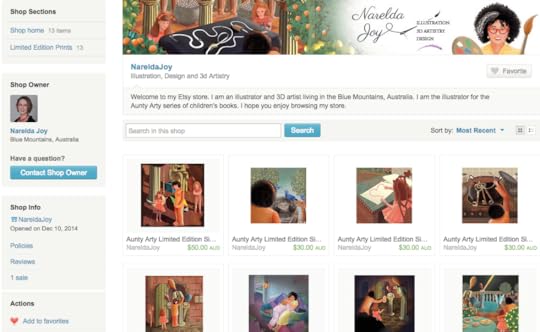
Signed limited edition prints of Aunty Arty illustrations by Narelda Joy are now available on Etsy! https://www.etsy.com/au/shop/NareldaJoy
Published on February 03, 2015 01:19
January 28, 2015
The Stoneslide Corrective and how to run a successful Kickstarter campaign
I've been a fan of The Stoneslide Corrective ever since I came across their rejection generator a couple of years ago. They are now running a Kickstarter campaign to turn their weekly e-magazine, featuring fiction, humour and satire, into a paper-based life-form. Many others must love what they're doing too ... because they reached their target of $6000 in five days! Every dollar raised over their goal will go towards improving the magazine and paying contributors, so there's still time to support this unique publication ... I asked Christopher Wachlin, one of the founders and editors of Stoneslide, more about what has made their Kickstarter campaign so successful and their future plans for the magazine ...
Why do you think people enjoy supporting projects through campaigns on Kickstarter?
We think people do have a natural reservoir of generosity. When they see a project they like they want to contribute. We’re grateful to readers we’ve never met who have given, and to our friends and relatives who’ve also given.
You reached your target in five days, why do you think your campaign was so successful?
I can think of a few factors: we had an audience already from our website, which we’ve been running for nearly three years. We’re producing a great magazine, with great writing and art, and we’re genuinely excited about that. The single most effective tactic was to cultivate a network of evangelists - people who want to support us and the magazine, and were ready to spread the word on day one.
What advice would you give for others when developing Kickstarter pledge packages?
We’re not experts by any means, as this was our first campaign, but we can say this to other neophytes: learn a lot. Read about what others have done, check out lots of other campaigns, get a sense for what the norms and expectations are in this medium. Then do your thing. Be conscious of what’s expected, but don’t only try to do what someone else says works. Let your spirit show.
You say that anything you raise over your $6000 goal will allow you to pay your contributors and improve the magazine. Tell us how people can still help to support the new magazine?
Even though we’ve reached our initial goal, this is a fledgling enterprise, and we want to give it the strength to really take off and reach more people. First, paying writers is always a good thing. The more we can direct to them, the more they may be able to develop their art and produce more great work.
The reason we decided to create a print edition was to create a great reading experience. A part of that is about the aesthetics, the feel, the photography - everything that surrounds and supports the text. We can improve that and make the feel of the magazine a little finer by investing in better paper stock, using special inks, and other things like that. We’re very excited to have that possibility, and we think our readers will really appreciate it.
Support their Kickstarter campaign at: https://www.kickstarter.com/projects/1511207199/the-stoneslide-corrective-print-magazine
And enjoy watching this video ...
Why do you think people enjoy supporting projects through campaigns on Kickstarter?
We think people do have a natural reservoir of generosity. When they see a project they like they want to contribute. We’re grateful to readers we’ve never met who have given, and to our friends and relatives who’ve also given.
You reached your target in five days, why do you think your campaign was so successful?
I can think of a few factors: we had an audience already from our website, which we’ve been running for nearly three years. We’re producing a great magazine, with great writing and art, and we’re genuinely excited about that. The single most effective tactic was to cultivate a network of evangelists - people who want to support us and the magazine, and were ready to spread the word on day one.
What advice would you give for others when developing Kickstarter pledge packages?
We’re not experts by any means, as this was our first campaign, but we can say this to other neophytes: learn a lot. Read about what others have done, check out lots of other campaigns, get a sense for what the norms and expectations are in this medium. Then do your thing. Be conscious of what’s expected, but don’t only try to do what someone else says works. Let your spirit show.
You say that anything you raise over your $6000 goal will allow you to pay your contributors and improve the magazine. Tell us how people can still help to support the new magazine?
Even though we’ve reached our initial goal, this is a fledgling enterprise, and we want to give it the strength to really take off and reach more people. First, paying writers is always a good thing. The more we can direct to them, the more they may be able to develop their art and produce more great work.
The reason we decided to create a print edition was to create a great reading experience. A part of that is about the aesthetics, the feel, the photography - everything that surrounds and supports the text. We can improve that and make the feel of the magazine a little finer by investing in better paper stock, using special inks, and other things like that. We’re very excited to have that possibility, and we think our readers will really appreciate it.
Support their Kickstarter campaign at: https://www.kickstarter.com/projects/1511207199/the-stoneslide-corrective-print-magazine
And enjoy watching this video ...
Published on January 28, 2015 02:17
January 20, 2015
Declutter your mind for more creative thoughts
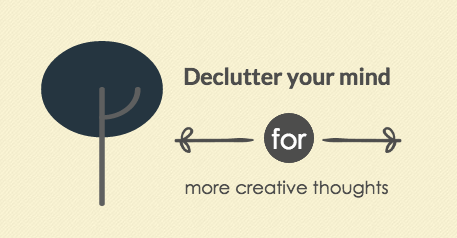
I recently read an article in The New Yorker about Vine, the new short form video site where users share 6 second videos on loop. It’s apparently massive. I logged on because it sounded so absurd that we could be entertained in 6 seconds. I watched a few featured videos and couldn’t quite see what the appeal is. Something about Vine disturbed me, if I’m to be honest ... has our attention span decreased to 6 seconds? And the looping … do we have to watch things over and over again to get it? Something about it felt a bit eerie to me … and it made me question, yet again, what is technology really doing to our minds?
Late last year I took Twitter and Facebook off my smartphone. I was wanting to invite peace back into my mind - to stand in a queue at the supermarket and just wait patiently, to sit in a café and drink a coffee and think, to stir a pot of gravy mindfully.
There was an article recently about Neil Gaiman taking a hiatus from Twitter because he missed boredom and about how much boredom is an important ingredient for creativity. So true, our best ideas come when we’re washing the dishes or on a long, boring, road trip. If we’re stuffing our brains with tidbits are we missing out on those lightbulb moments?
Here are 10 simple tips for decluttering your mind:
Create lists on Twitter so that if you are spending time on it, you’re looking at content that's valuable and serves a purpose. My favourites at the moment are Aerogramme Writers Studio, Brainpickings and Literary Rejections, as well as other writers and peers that I respect.Decide what apps you really need on your phone. If you're starting to act like Pavlov's Dogs and have been conditioned to salivate and hunger after likes and retweets and you're sniffing around particular apps far too often, it's time for them to go ...Use Buffer (www.bufferapp.com) to schedule your tweets, it's far superior to Hootsuite. Their ‘re-buffer this post’ option is total genius. Schedule your tweets and forget about them for a week or two.Unsubscribe from all those enewsletters that make you feel overwhelmed when you open your inbox. What do you really read? Those other ones are just cluttering your mind.Value idle time. Go for a walk, a run, a bike ride, a long drive. Don’t listen to a podcast or music. Sit on a train wearing sunglasses and stare at fellow passengers.Cook a new recipe, there’s peace to be found in focusing on a new task.Read a novel, it sounds obvious for writers, but you'd be surprised!If you write first thing in the morning, like I do, minimise the amount of time you spend checking emails or social media sites before writing. It's the golden time to be creative. Write before you cloud your mind with other things.Enjoy a new experience without having to photograph and share it. No one will appreciate it as much as you will … that is … if you are truly present in the moment.Work out what’s meaningful in your life. If it’s not meaningful then it’s just a distraction.
Published on January 20, 2015 12:04
Decluttering your mind for more creative thoughts
I recently read an article in The New Yorker about Vine, the new short form video site where users share 6 second videos on loop. It’s apparently massive. I logged on because it sounded so absurd that we could be entertained in 6 seconds. I watched a few featured videos and couldn’t quite see what the appeal is. Something about Vine disturbed me, if I’m to be honest ... has our attention span decreased to 6 seconds? And the looping … do we have to watch things over and over again to get it? Something about it felt a bit eerie to me … and it made me question, yet again, what is technology really doing to our minds?
Late last year I took Twitter and Facebook off my smartphone. I was wanting to invite peace back into my mind - to stand in a queue at the supermarket and just wait patiently, to sit in a café and drink a coffee and think, to stir a pot of gravy mindfully.
There was an article recently about Neil Gaiman taking a hiatus from Twitter because he missed boredom and about how much boredom is an important ingredient for creativity. So true, our best ideas come when we’re washing the dishes or on a long, boring, road trip. If we’re stuffing our brains with tidbits are we missing out on those lightbulb moments?
Here are 10 simple tips for decluttering your mind:
Create lists on Twitter so that if you are spending time on it, you’re looking at content that's valuable and serves a purpose. My favourites at the moment are Aerogramme Writers Studio, Brainpickings and Literary Rejections, as well as other writers and peers that I respect.Decide what apps you really need on your phone. If you're starting to act like Pavlov's Dogs and have been conditioned to salivate and hunger after likes and retweets and you're sniffing around particular apps far too often, it's time for them to go ...Use Buffer (www.bufferapp.com) to schedule your tweets, it's far superior to Hootsuite. Their ‘re-buffer this post’ option is total genius. Schedule your tweets and forget about them for a week or two.Unsubscribe from all those enewsletters that make you feel overwhelmed when you open your inbox. What do you really read? Those other ones are just cluttering your mind.Value idle time. Go for a walk, a run, a bike ride, a long drive. Don’t listen to a podcast or music. Sit on a train wearing sunglasses and stare at fellow passengers.Cook a new recipe, there’s peace to be found in focusing on a new task.Read a novel, it sounds obvious for writers, but you'd be surprised!If you write first thing in the morning, like I do, minimise the amount of time you spend checking emails or social media sites before writing. It's the golden time to be creative. Write before you cloud your mind with other things.Enjoy a new experience without having to photograph and share it. No one will appreciate it as much as you will … that is … if you are truly present in the moment.Work out what’s meaningful in your life. If it’s not meaningful then it’s just a distraction.
Late last year I took Twitter and Facebook off my smartphone. I was wanting to invite peace back into my mind - to stand in a queue at the supermarket and just wait patiently, to sit in a café and drink a coffee and think, to stir a pot of gravy mindfully.
There was an article recently about Neil Gaiman taking a hiatus from Twitter because he missed boredom and about how much boredom is an important ingredient for creativity. So true, our best ideas come when we’re washing the dishes or on a long, boring, road trip. If we’re stuffing our brains with tidbits are we missing out on those lightbulb moments?
Here are 10 simple tips for decluttering your mind:
Create lists on Twitter so that if you are spending time on it, you’re looking at content that's valuable and serves a purpose. My favourites at the moment are Aerogramme Writers Studio, Brainpickings and Literary Rejections, as well as other writers and peers that I respect.Decide what apps you really need on your phone. If you're starting to act like Pavlov's Dogs and have been conditioned to salivate and hunger after likes and retweets and you're sniffing around particular apps far too often, it's time for them to go ...Use Buffer (www.bufferapp.com) to schedule your tweets, it's far superior to Hootsuite. Their ‘re-buffer this post’ option is total genius. Schedule your tweets and forget about them for a week or two.Unsubscribe from all those enewsletters that make you feel overwhelmed when you open your inbox. What do you really read? Those other ones are just cluttering your mind.Value idle time. Go for a walk, a run, a bike ride, a long drive. Don’t listen to a podcast or music. Sit on a train wearing sunglasses and stare at fellow passengers.Cook a new recipe, there’s peace to be found in focusing on a new task.Read a novel, it sounds obvious for writers, but you'd be surprised!If you write first thing in the morning, like I do, minimise the amount of time you spend checking emails or social media sites before writing. It's the golden time to be creative. Write before you cloud your mind with other things.Enjoy a new experience without having to photograph and share it. No one will appreciate it as much as you will … that is … if you are truly present in the moment.Work out what’s meaningful in your life. If it’s not meaningful then it’s just a distraction.
Published on January 20, 2015 12:04



